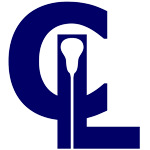Kean University
Profile
Size
8 / 10Cost
5 / 10Selectivity
4 / 10-
Team Conference
Independent
-
College Type
4-year, Public
-
Campus Type

Suburb: Large
Student Body
Gender
- Male
- Female
Enrollment
- Full Time
- Part Time
Geography
- In-State
- Out-of-state
- Foreign
- Other
Ethnicity
- White
- Black
- Asian
- Latino
- Foreign
- Other
Other includes American Indian, Native Alaskan, Native Hawaiian or other Pacific Islander, two or more races and unknown race / ethnicity.
Coach Recruiting Interview
The college recruiting process is a gamble in any sport. And lacrosse is no exception. Athletes develop physically and mentally at different stages throughout high school. Some players are heavily recruited early on while other great players are under recruited until late in their junior and senior years. Even good high school players aren’t guaranteed to be great college players. In college, a player’s success regardless of their high school performance is determined by their willingness to compete and their ability to balance academics, athletics and social life. Kean University Head Coach Shelley Sheiner, knows his role as a coach and mentor is to help his players achieve success by giving them support, structure, and guidance. When referring to his recruiting classes he says it’s not about who comes in, it’s about who comes back.
Kean University Head Coach Shelley Sheiner is a Cougar through and through. He played for the program and is now it’s longstanding head coach with 11 seasons under his belt. He has amassed four record-breaking seasons. In 2008 and 2010 his teams achieved a record 14 wins. In 2013 the Cougars set the bar higher with a 15-3 performance. 2014 was their finest year yet with a 16-3 result breaking the all-time wins total for a single season. Sheiner is an active member in the New Jersey chapter of US Lacrosse and a sitting member on the New Jersey Lacrosse Hall of Fame Committee. He is a special education teacher at Roy W. Brown Middle School in Bergenfield, NJ. In his spare time he volunteers as a coach for the Fair Lawn Junior Wrestling Program.
What advice do you have for young players interested in playing DIII lacrosse?
Take a campus visit. Spend time interacting with students and getting a feel for student life. On recruiting visits, I don’t have recruits stay with the star player. For the star player life is good and things seem easier. Instead I put recruits with the guys who are moving their way up the depth chart. Recruits can learn the value of hard work and time management from some of our younger players. They can also better understand the challenges they will face as student-athletes. If the guys are busting their butts, working hard and still enjoying the university, then that speaks volumes to the quality of their experience.
I suggest you get to know the coaching staff as well. Understand what the head coach’s philosophy is and also get to know the assistant coaches. Are the assistants just making a pit stop at this college on their way to a bigger coaching job at a different school? What’s the coaching staff’s level of dedication? Be a smart shopper and really do your homework.
What’s the best way for players to get on your recruiting radar?
A well written email and an athletic resume. Every coach knows a generic email when they see one. Craft a very thoughtful email because the written word jumps out to me. It shows the player is genuinely interested.
What are some questions players should ask more in the recruiting process?
Actually I have some questions that players should be asking less. Those questions are about playing time, about who our sponsors are or what our gear is like. Those aren’t bad questions to ask, but there’s a time and a place. Save them for the second visit or later on in the process. When you first meet a coach you want to show broader thinking. What style lacrosse do you play? Or, what are your most important values as a coach?
I like academic questions too because they show that a recruit is thinking beyond just the lacrosse aspect of a college.
What indications help you determine if a good high school player will become a great college player?
Measuring future talent based on previous athletic and academic performance is always a gamble. When I look at a recruiting class I don’t get excited about what comes in as much as I get excited about what comes back. Kids transfer, drop out or pursue other interests. Ultimately being a great college lacrosse player falls on the individual and their ambitions. They decide what they want to get out of their college lacrosse experience.
Academic performance is similar. We have recruits that barely get through our admissions process but end up pulling A’s and B’s throughout college. On the other hand, their teammates that were stronger high school students don’t perform as well in the classroom during their four years of college.
It’s a coach’s job to help their young men grow. While recruiting is a gamble, a coach has the ability to influence their gamble. The coach gives their players support, structure and guidance.
What’s special about being a student-athlete at Kean University?
We’re best known throughout New Jersey for our strong education, business, and sports medicine programs. A lot of our players pursue a career in education. We also offer more specific degrees like a Bachelor of Industrial Design. Students use applied art and applied science to redesign everyday objects from sports cars to furniture and even household appliances. Combine that education with a DIII lacrosse program and you’ve got a pretty unique college experience.
I can speak to being a student-athlete because I’m a Kean alum. Showing a recruit the school is like showing them my house. I’ve lived the student experience. It’s very gratifying to experience Kean from a teacher and coach’s perspective now. I’m proud to drive up to the school every day.
Great, thanks Coach Sheiner. Any final thoughts?
There’s only one national champion. If you don’t win that game is your season a failure? In 11 years of coaching nothing has been more important to me than making sure my players have the best experience possible. I’ve only had seven players transfer out of Kean in those 11 years. When players have fun and enjoy themselves, the wins will come.
ConnectLAX is a third party recruiting service and not affiliated with or endorsed by Kean University or Shelley Sheiner.
Player Experience Survey
Access to private tutors: Yes
Athlete-only facilities / meals: No
Hours / week on team activities
In-season: 21-30 Out-of-season 11-15
Average size of recruiting class
16-20 incoming recruits
Level of coach involvement in academics
9 / 10
Quality of athletic training staff
9 / 10
Quality of athletic / practice facilities
10 / 10
Description of coaching style
“Straight forward, tough, extremely honest, passionate, team oriented.”
“I like that we get young coaches that just graduated college not too long ago because it gives us more of a connection because they have recently just played the game with newest rules.”
“Great atmosphere. They push us hard and are excellent mentors.”
+ / - of overall team experience
“Everyone on the team is close and has a clear academic priority. Positive team environment. The only negative I can think of is being a young team competing in arguably the toughest conference in the nation.”
“Positive: Good chemistry on the field. Very close team relationship.
Negative: Long nights. Assistant coaching staff needs more experience.”
“Our team is a family, from the first on the depth chart to the last we all stick together and help each other, and much more than other programs.”
Team Road Trips
Most games are played in Pennsylvania, New York, and New Jersey.In the past the team has traveled to Texas and Virginia.
Recruit Commits
2023 | |||
Hometown |
Position(s) | ||
| Jacob Gorospe-Burke |

|
Alpha, NJ | Def |
| Aaron Boccio | Lindenhurst, NY | Att | |
| Ryan Fuhs | Marlton, NJ | Def, LSM | |
2022 | |||
Hometown |
Position(s) | ||
| Anthony Moffa |

|
Marlton, NJ | Def, LSM |
| Pasquale Capozzoli |

|
Caldwell, NJ | Goal |
| Hunter Diederich |

|
Pittstown, NJ | Def, LSM |
| Andrew Tavarez |

|
Asbury, NJ | Mid |
| Drew Tucker | Sicklerville , NJ | LSM, Def | |
| Jonathan Slusser | Hammonton, NJ | Att | |
| Giancarlo DeFilippis | Collegeville, PA | Mid | |
2021 | |||
Hometown |
Position(s) | ||
| Tommy Hamtil |

|
Whippany, NJ | Att |
| JJ Gillette | Maplewood, NJ | Def, LSM | |
| Christian Baucom | Hunterdon, NJ | Faceoff | |
2020 | |||
Hometown |
Position(s) | ||
| Anthony Azara |

|
Titusville, NJ | Att, Mid |
| Elijah Darby | Lake Hiawatha , NJ | Mid, Att | |
2019 | |||
Hometown |
Position(s) | ||
| Tyber Budrow |

|
Toms River, NJ | Goal |
| Sean Carothers | Sparta, NJ | Att | |
2018 | |||
Hometown |
Position(s) | ||
| Nicholas Moffa |

|
Marlton, NJ | Mid, Faceoff |
| Benjamin Smith |

|
Berlin, NJ | Att |
| Bryce Berger |

|
Delanco, NJ | Mid |
| Steven Thorne | Flemington, NJ | LSM | |
2017 | |||
Hometown |
Position(s) | ||
| Charlie Stutzenberger | Plymouth, MA | Mid | |
| T.J. Sharples | Paramus, NJ | Att, Mid | |
| Kyle Ryder | Congers, NY | Att | |
| Patrick Rosiak | Old Bridge, NJ | Att | |
| Ryan Delgado | Bridgewater, NJ | Mid | |
| Justin Regester | Ringwood, NJ | Att | |
| Dylan Pelago | Toms River, NJ | Mid, Def | |
| Caleb Loran | Ringwood, NJ | Mid | |
| Zion Powell | Brick, NJ | Def, LSM | |
2016 | |||
Hometown |
Position(s) | ||
2015 | |||
Hometown |
Position(s) | ||
Events By Kean University Coaches
Location
Team Videos
Where Grads Live
- Greater New York City Area
- Greater Philadelphia Area
- Greater Atlanta Area
- Miami/Fort Lauderdale Area
- Washington D.C. Metro Area
- Greater Los Angeles Area
- Allentown Pennsylvania Area
- Greater Boston Area
- Tampa/St. Petersburg Florida Area
- Orlando Florida Area
- Charlotte North Carolina Area
- San Francisco Bay Area
- Raleigh-Durham North Carolina Area
- West Palm Beach Florida Area
- Dallas/Fort Worth Area
Where Grads Work
- Merck
- AT&T
- Rutgers University
- Prudential Financial
- Johnson & Johnson
- JPMorgan Chase
- Bank of America
- ADP
- Novartis
- Verizon Wireless
- Newark Public Schools
- Merrill Lynch
- Wells Fargo
- MetLife
- AIG
What Grads Do
- Education
- Sales
- Operations
- Entrepreneurship
- Healthcare Services
- Information Technology
- Finance
- Administrative
- Support
- Arts and Design
- Community and Social Services
- Accounting
- Media and Communication
- Human Resources
- Marketing
Niche Grades
Overall Experience

Student Life

Professor Rating

Academics

Athletics

Campus

Academics
Test Scores
This range represents the middle half of incoming freshman from the 25th to 75th percentile. The writing component is now optional and no longer reported.
This distribution represents incoming freshman test scores and GPA on 4.0 scale.
Admissions
Total |
Male | Female | |
| Applicants | 9,540 | 3,689 | 5,851 |
| % Admitted | 69% | 68% | 69% |
| % Admits That Enroll | 27% | 29% | 26% |
| Incoming Freshman Average GPA | 3.1 |
Admission Considerations
Required | Rec. | |
|---|---|---|
| High School GPA | ||
| High School Rank | ||
| High School Transcript | ||
| College Prep Classes | ||
| Recommendations | ||
| Demonstrate Competencies | ||
| Admission Test Scores | ||
| Other Tests (Wonderlic, etc.) | ||
| TOEFL (English proficiency) |
Majors / Programs
Degrees offered by popularity. Type = Bachelor.
Financial
Net Price
Average net price = sticker price - financial aid.
$17,490
Average net price by income for incoming freshman receiving financial aid.
Net price for students paying in-state tuition rate (public institutions).
Sticker Price
Sticker price = estimated total cost of attendance.
In-state | Out-of-state | |
On Campus | ||
| Tuition & Fees | $12,595 | $18,637 |
| Books & Supplies | $1,000 | $1,000 |
| Cost of Living | $14,802 | $14,802 |
| Personal Expenses | $2,281 | $2,281 |
| Sticker Price | $30,678 | $35,704 |
Personal expenses includes laundry, transportation, entertainment and furnishings.
Financial Aid
92% of full-time, incoming freshman receive financial aid.
Receiving Aid % | Avg. Aid Amount | |
Type of Aid | ||
| Grant or Scholarship | 76% | $8,181 |
| Federal Grants | 60% | $5,004 |
| Pell Grants | 60% | $4,835 |
| Other Federal | 18% | $567 |
| State & Local Grants | 48% | $5,242 |
| Institutional Grants | 29% | $2,359 |
| Student Loans | 65% | $10,168 |
| Federal Loans | 63% | $5,275 |
| Other Loans | 23% | $13,974 |
All financials shown for full-time, incoming freshman.
Total Amount | Per Student | |
Endowment | ||
| Financial Assets | $27 Million | $1,921 |
Value of endowment assets at fiscal year end.
Debt
Total federal debt after graduation for undergrad borrowers: $24,000.
Total cumulative student debt by percentile.
Total Principal | Monthly Payment | |
| 10 Year Repayment | $17,750 | $255 |
Most student loans have a grace period before repayment begins.
3 Year Avg. Default Rate: 7.4%
Avg. rate for colleges with lacrosse is 5.1%.
Total federal debt excludes private student loans and parent PLUS loans. Cumulative debt cohort includes 6,858 students.
Salary
Earnings 10 years after enrollment: $46,100
Earnings of former students working by percentile.
Earnings of former students who received federal financial aid. Figures shown are median.
Payback
How long until this college investment pays off: 5.19 years.
Median debt and foregone earnings divided by median earnings. Foregone earnings assumes 4 years to graduation; at this school, 21% of students graduate on time.
Team Social
Campus Safety
On Campus |
In Res. Halls |
|
|---|---|---|
Criminal Offenses |
||
| Murder | - | - |
| Negligent Manslaughter | - | - |
| Rape | 7 | 7 |
| Fondling | 2 | 2 |
| Incest | - | - |
| Statutory Rape | - | - |
| Robbery | - | - |
| Aggravated Assault | - | - |
| Burglary | 3 | 3 |
| Motor Vehicle Theft | 3 | 3 |
| Arson | - | - |
In Residence Halls are a subset of On Campus statistics. Murder includes non-negligent manslaughter.
The crime data reported by the institutions have not been subjected to independent verification by the U.S. Department of Education. Therefore, the Department cannot vouch for the accuracy of the data reported here. Statistics represent 3-year average data.
Data from The National Center for Education Statistics (NCES), the primary federal entity for collecting and analyzing data related to education.
Carnegie Classifications
Category |
Classification |
|---|---|
| Basic Classification | Master's Colleges & Universities: Larger Programs |
| Undergrad Instruction | Balanced arts & sciences/professions, some graduate coexistence |
| Graduate Instruction | Research Doctoral: Professional-dominant |
| Enrollment Profile | High undergraduate |
| Undergrad Profile | Four-year, full-time, inclusive, higher transfer-in |
| Size and Setting | Four-year, large, primarily nonresidential |
Carnegie classifications provide a framework for evaluating comparable schools.
Teams In Conference
-

-

-

-

-

-

-

-

-

-

-

-

-

-

-

-

-

-

-

-

-

-

-

-

-

Similar Academic Schools
-

-

-

-

-

-

-

-

-

-

-


 See more college grades
See more college grades Free ACT and SAT test prep
Free ACT and SAT test prep Free SAT test prep
Free SAT test prep Net price calculator
Net price calculator Free scholarship search
Free scholarship search